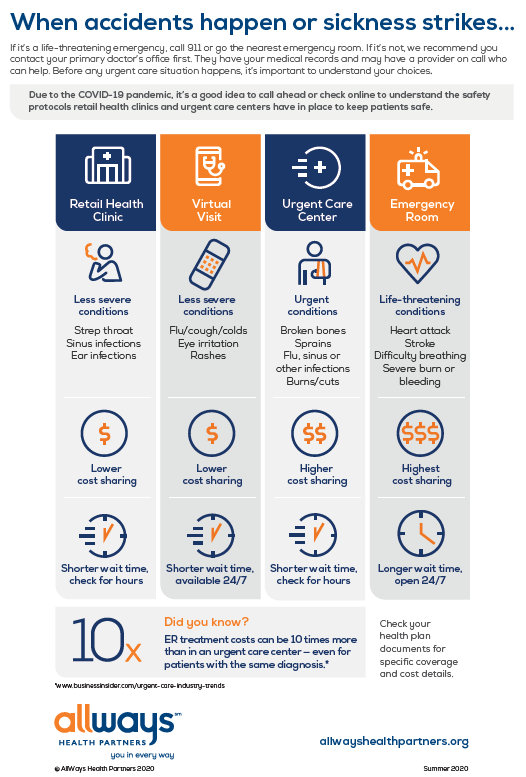Urgent vs. emergency: Understanding your options for care
Thanks to the booming popularity of urgent care, retail health clinics, and telemedicine offerings, there are many options to choose from when it comes to deciding where to get care. Add in your primary care provider and the emergency room and the choices—and differences between them—can become even more confusing.
Because it’s not always easy to understand what health situations call for what type of care, we created an easy-to-share infographic that explains the differences between each option.
Some ways to use this infographic:
- Email it to your employees
- Post it in workplace break rooms
- Include it in an employee newsletter or with paychecks
- Add it to new employee benefit packages
- Share it on social media
Know your options for getting care
If it’s a life-threatening emergency, call 911 or go to the nearest emergency room. If it’s not, we recommend you contact your primary doctor’s office first. They have your medical records and may have a provider on call who can help. Before any urgent care situation happens, it’s important to understand your options.
Due to the COVID-19 pandemic, it's a good idea to call ahead of check online to understand the safety protocols retail health clinics and urgent care centers have in place to keep patients safe.
Retail health clinic
- Use this option for: Less severe conditions like strep throat, sinus infections, or ear infections
- Lower cost sharing
- Shorter wait time
Virtual visit
- Use this option for: Less severe conditions like the flu/cough/cold, eye irritation, and rashes
- Lower cost sharing
- Shorter wait time, available 24/7
Urgent care center
- Use this option for: Urgent conditions like broken bones, sprains, the flu, sinus, or other infections, and burns/cuts
- Higher cost sharing
- Shorter wait time
Emergency room
- Use this option for: Life-threatening conditions like a heart attack, stroke, difficulty breathing, a severe burn or injury
- Highest cost sharing
- Longer wait time, open 24/7


